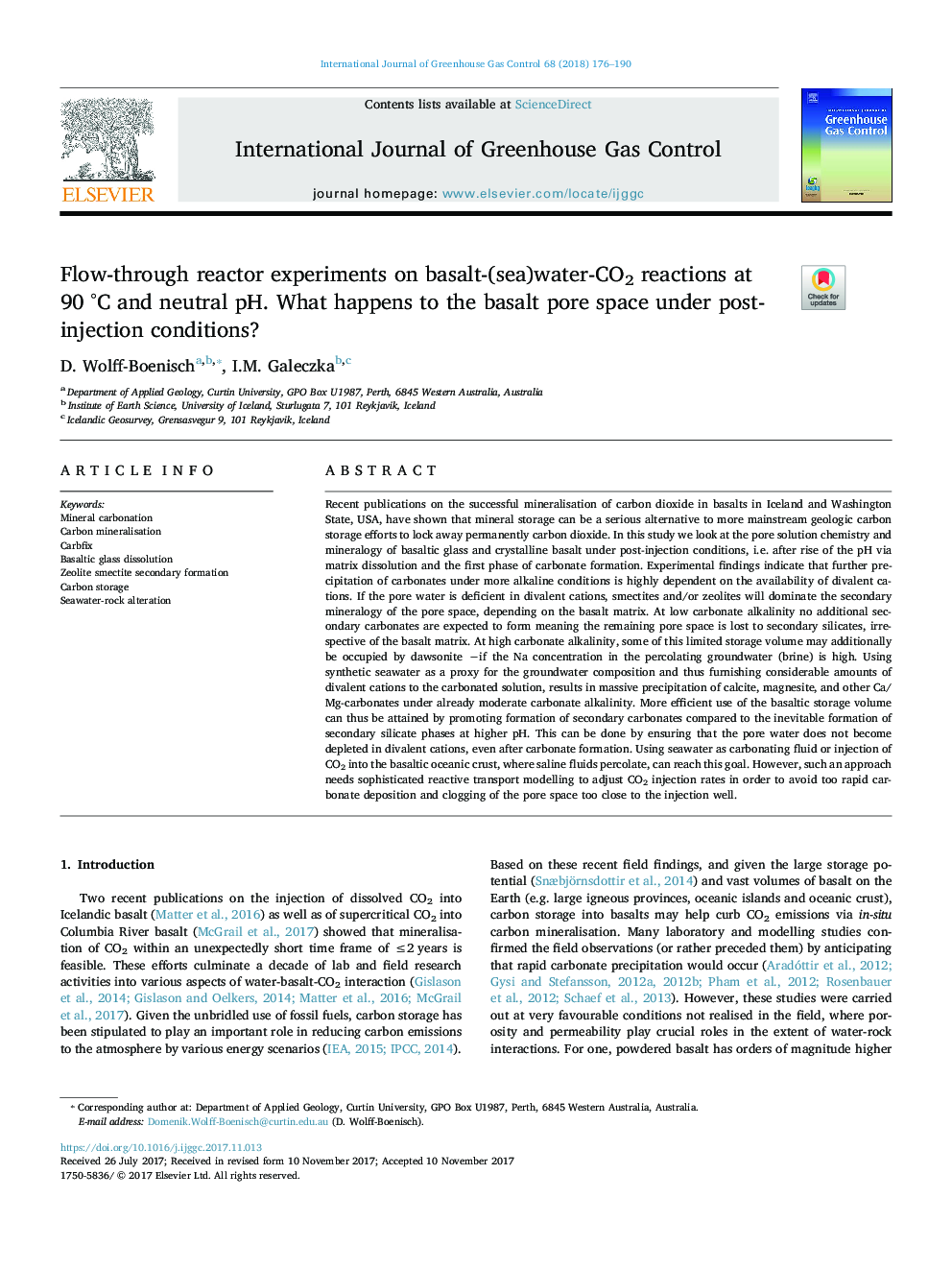| کد مقاله | کد نشریه | سال انتشار | مقاله انگلیسی | نسخه تمام متن |
|---|---|---|---|---|
| 8089770 | 1521951 | 2018 | 15 صفحه PDF | دانلود رایگان |
عنوان انگلیسی مقاله ISI
Flow-through reactor experiments on basalt-(sea)water-CO2 reactions at 90 °C and neutral pH. What happens to the basalt pore space under post-injection conditions?
دانلود مقاله + سفارش ترجمه
دانلود مقاله ISI انگلیسی
رایگان برای ایرانیان
کلمات کلیدی
موضوعات مرتبط
مهندسی و علوم پایه
علوم زمین و سیارات
فرآیندهای سطح زمین
پیش نمایش صفحه اول مقاله

چکیده انگلیسی
Recent publications on the successful mineralisation of carbon dioxide in basalts in Iceland and Washington State, USA, have shown that mineral storage can be a serious alternative to more mainstream geologic carbon storage efforts to lock away permanently carbon dioxide. In this study we look at the pore solution chemistry and mineralogy of basaltic glass and crystalline basalt under post-injection conditions, i.e. after rise of the pH via matrix dissolution and the first phase of carbonate formation. Experimental findings indicate that further precipitation of carbonates under more alkaline conditions is highly dependent on the availability of divalent cations. If the pore water is deficient in divalent cations, smectites and/or zeolites will dominate the secondary mineralogy of the pore space, depending on the basalt matrix. At low carbonate alkalinity no additional secondary carbonates are expected to form meaning the remaining pore space is lost to secondary silicates, irrespective of the basalt matrix. At high carbonate alkalinity, some of this limited storage volume may additionally be occupied by dawsonite âif the Na concentration in the percolating groundwater (brine) is high. Using synthetic seawater as a proxy for the groundwater composition and thus furnishing considerable amounts of divalent cations to the carbonated solution, results in massive precipitation of calcite, magnesite, and other Ca/Mg-carbonates under already moderate carbonate alkalinity. More efficient use of the basaltic storage volume can thus be attained by promoting formation of secondary carbonates compared to the inevitable formation of secondary silicate phases at higher pH. This can be done by ensuring that the pore water does not become depleted in divalent cations, even after carbonate formation. Using seawater as carbonating fluid or injection of CO2 into the basaltic oceanic crust, where saline fluids percolate, can reach this goal. However, such an approach needs sophisticated reactive transport modelling to adjust CO2 injection rates in order to avoid too rapid carbonate deposition and clogging of the pore space too close to the injection well.
ناشر
Database: Elsevier - ScienceDirect (ساینس دایرکت)
Journal: International Journal of Greenhouse Gas Control - Volume 68, January 2018, Pages 176-190
Journal: International Journal of Greenhouse Gas Control - Volume 68, January 2018, Pages 176-190
نویسندگان
D. Wolff-Boenisch, I.M. Galeczka,